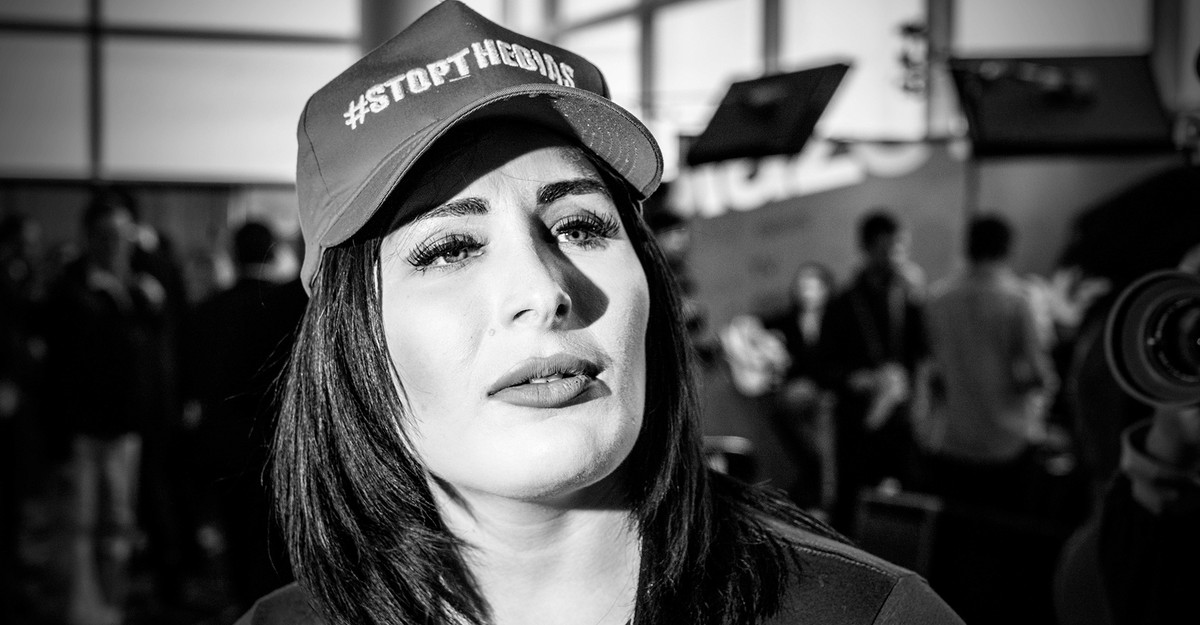When people talk about the sparkly, vodka-sloshed sound of pop in the 2000s and early 2010s—an era of music that’s romanticized a lot lately—the names of two men tend to come up: Max Martin and Dr. Luke. Because the producers helped shape many of the biggest songs of the new millennium, and because they’ve often worked together, they’re frequently discussed in the same breath. But Katy Perry’s new, Luke-driven dud of an album, 143, is an opportunity to examine these producers’ separate outlooks—and reckon with the dark side of aughts-pop nostalgia.
Martin, a 53-year-old Swede, excels at creating bittersweet melodies and genre-blending arrangements; the highlights of his catalog, such as Britney Spears’s “Lucky ” and Taylor Swift’s “Blank Space,” sound precision-made yet weirdly soulful. By contrast, I’ve come to recognize Dr. Luke’s work by its reptilian sensibility. The 50-year-old former Saturday Night Live–band guitarist is, at base, a disco producer, enamored by the power of a steadily thumping beat. His heyday was the peak of so-called recession pop, in the years after the 2008 financial crash, when bludgeoning electronic-dance beats took over the charts—by getting people to move, not feel.
Luke’s approach has typically connected best in collaboration with fiery, distinct performers. That fact has proved to be a problem over the years, given that he’s alienated some of the most willful women in pop music. Pink, Kelly Clarkson, and Bebe Rexha have all called him a jerk. In 2014, Kesha filed a shocking lawsuit alleging emotional and physical abuse by Luke, who’d been her mentor and manager. Luke strongly denied her allegations, and the ensuing court battle—during which many established stars avoided recording with him—concluded only last year. The two sides settled and put out statements referencing Kesha’s claim that Luke had drugged and raped her. “Only God knows what happened that night,” Kesha said, whereas Luke said, “I am absolutely certain that nothing happened.”
Now, the decade-long estrangement between Luke and one former collaborator has thawed. He was part of the creative team behind Perry’s early success, including by helping produce and write Teenage Dream, her era-defining, hugely selling 2010 album. When they stopped working together after 2013’s Prism, Perry’s next two albums didn’t make much of a splash. Her latest release, 143, has been marketed as a dance party and a return to form—and of the 11 songs on the album’s standard edition, 10 feature writing and production by Luke. (Martin, another architect of Perry’s former hits, assisted on one song, as a co-writer.) The reunion has gone terribly: 143 is, by some measures, the worst-reviewed album in more than a decade.
Some of the distaste for the album is linked to Luke’s reputation. 143’s debut single, “Woman’s World,” is a feminist-empowerment anthem whose video features Perry in Rosie the Riveter cosplay—and that the song was co-created by a man who repeatedly clashed with female collaborators has not gone unnoticed. The track itself is a decent simulacrum of Luke’s and Perry’s previous output; simple chunks of melody snap together over a synth pulse, calling to mind a kid assembling Duplos. Yet this sonic evocation of the past only heightens the discomfort of listening. “Woman’s World” throws back to an era of Go girl! songs whose key stars (Kesha, Spears) later said they didn’t have much artistic control. It’s nostalgia bait that inadvertently shows history as uglier than we understood it to be at the time.
No one has ever accused Perry of being a bold and forward-thinking artist; she has long come off like a super-charming host at a chain restaurant. On 143, though, it feels like the light has gone out of her eyes and the kitchen’s suffered cutbacks. The album’s beats—trance, electro, hip-hop—make no attempt to update old ideas. “Gorgeous” leadenly imitates the wild sound effects of Sophie, the most cliché-busting pop producer of the 2010s. Perry tends to blend raver lingo and therapy-speak—the trick Madonna pulled on Ray of Light nearly three decades ago—with all the gusto of a phone operator. Whenever something approaching real fun does start to coalesce, a grating lyric breaks the spell. On what could have been the best song, the promisingly pained “Truth,” the music just seems to give up on itself and die after two minutes.
This paint-by-numbers fare might have slid into the cultural landscape of 2011 without causing much annoyance. In 2024, it’s an affront, even setting aside Luke’s controversies. The previous time Perry put out an album, in 2020, I wondered if bouncy, broad-appeal sing-alongs were becoming obsolete thanks to the death of the monoculture. Lately, pop is starting to seem healthy again, thanks to stars such as Chappell Roan, Olivia Rodrigo, Billie Eilish, and Sabrina Carpenter. What they (and forebears such as Taylor Swift) offer is brash personality, lyrical specificity, and structural cleverness. The command-and-control model of hitmaking exemplified by Luke—in which the singer serves the production, not the other way around—is outmoded. Escapist fare can still appeal; it just needs to feel handmade, human.
And it would be insulting to suggest that Perry, or any of her Millennial peers, couldn’t have done better than 143. For example, stream Kesha’s “Joyride,” an explosion of foul-mouthed polka-pop. On first listen, when it was released in July, the song felt so over-the-top, so bristling with attitude, that it seemed miscalculated. A few months later, “Joyride” was my most played song of the summer. It’s the sound of a performer sweating the details while clearly having a blast with her collaborators: an idea that’s far removed from the cold cynicism so typical of pop’s past and, in Perry’s case, present.



